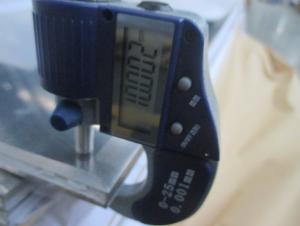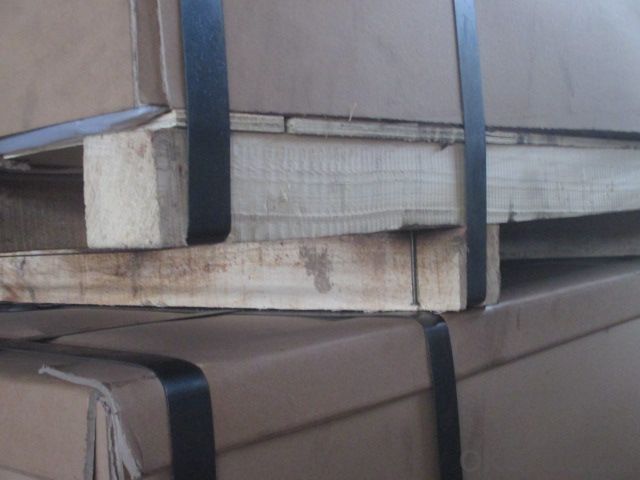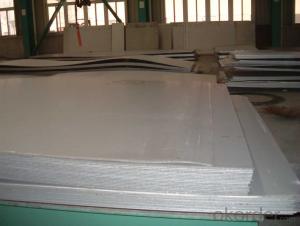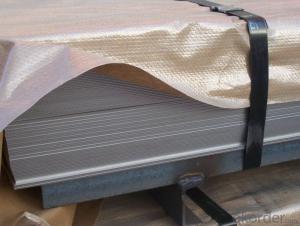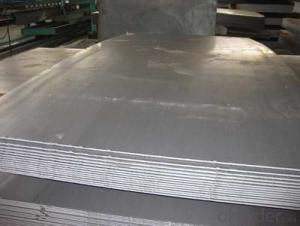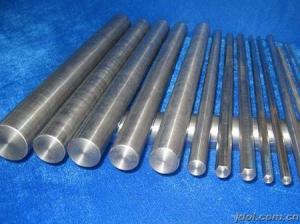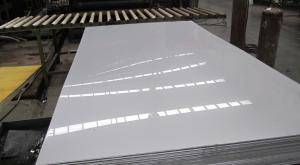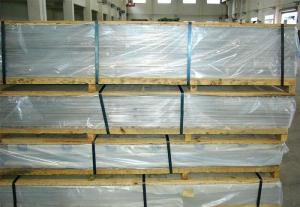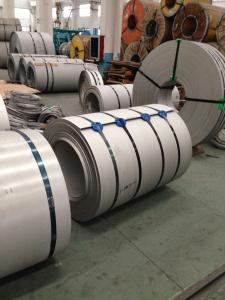Stainless Steel Sheet With Best price In Warehouse Price
- Loading Port:
- Shanghai
- Payment Terms:
- TT or LC
- Min Order Qty:
- 2 m.t.
- Supply Capability:
- 2000 m.t./month
OKorder Service Pledge
OKorder Financial Service
You Might Also Like
1、Structure of 304/2B STAINLESS STEEL SHEET.
STAINLESS STEEL SHEET IS ONE POPULAR PRODUCTS IN CHINA MARKET, IT HAVE SEVERAL DIFFERENT APPLICATIONS, SUCH AS, COwe are very famous for the construction adn other decoration field , etc.
NSTRUCTION, BUILDING, DECORATION, ETC.
THE GRADE ALSO INCLUDE: 200 SERIES, 300 SERIES, 400 SERIES, ETC.
Mainly applied in the industry of furniture, sports equipment, compressed containers, shipbuilding, railway and the automotive.
2、Main Features of the 304 STAINLES STEEL SHEET.
High intensity
Low welding costs.
er anodizing
Easy to operate. All-position welding.
Excellent corrosion resistance
Wide applicability.
Length per spool only for reference.
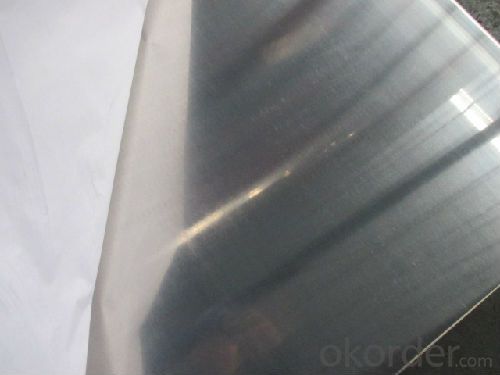
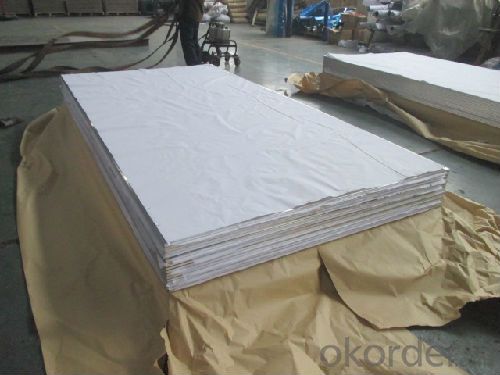
WIDTH*LENGTH: 1219MM*2438MM, 1500MM*3000MM, 1500MM*6000MM,ETC.
THE THICKNESS IS NORMALLY FROM 0.1MM TO 3MM, THEY ARE THE COLD ROLLED SHEET.
5、FAQ of 304/2B STAINLESS STEEL SHEET.
a.What is monthly capacity
---CNBM is one stated own company and our monthly capacity is about 2000tons.
b. Now which countries do you export your goods?
----Now we export to South East Asia,Africa, North America,South America ect.
- Q: Several processing techniques of colored stainless steel
- Sand blasting, sand blasting can be plated color, but the color of the plating and ordinary plating color difference exists, mainly due to sand blasting particles for emery. The color stainless steel sand blasting plate is made of zirconium beads through the mechanical equipment in the stainless steel plate surface, so that the surface of the board presents small beads, grainy sand surface, forming a unique decorative effect. Uses: mainly used in architectural decoration, elevator decoration, industrial decoration, facilities, decoration and other stainless steel products.
- Q: Are stainless steel sheets suitable for outdoor sculptures?
- Indeed, outdoor sculptures greatly benefit from the use of stainless steel sheets. This material is renowned for its durability and resistance to corrosion, making it exceptionally well-suited for enduring the harsh conditions of the outdoors. Furthermore, stainless steel exhibits remarkable resistance to rust, staining, and fading, thereby establishing itself as a low-maintenance alternative for outdoor sculptures. Moreover, stainless steel boasts a sleek and contemporary appearance, effectively enhancing the aesthetic allure of outdoor artworks. Its robustness and pliability also render it ideal for crafting intricate and elaborate sculptures. Consequently, stainless steel sheets prove to be an outstanding selection for outdoor sculptures, guaranteeing their longevity while simultaneously amplifying their visual impact.
- Q: Can stainless steel sheets be used for sink fabrication?
- Yes, stainless steel sheets can be used for sink fabrication. In fact, stainless steel is a popular material choice for sinks due to its durability, corrosion resistance, and aesthetic appeal. Stainless steel sheets can be easily formed and welded to create a seamless sink design, as they are malleable and can be customized to fit specific dimensions and styles. Additionally, stainless steel is hygienic and easy to clean, making it a practical choice for kitchen and bathroom sinks.
- Q: Are stainless steel sheets resistant to hydrochloric acid?
- Yes, stainless steel sheets are generally resistant to hydrochloric acid. Stainless steel is known for its high corrosion resistance, and it has been found to withstand a wide range of acids, including hydrochloric acid. However, the level of resistance can vary depending on the grade and composition of the stainless steel. In some cases, prolonged exposure to concentrated hydrochloric acid or high temperatures can cause corrosion or damage. Therefore, it is recommended to consult with a stainless steel specialist or refer to the specific stainless steel grade's corrosion resistance chart to determine the suitability of stainless steel sheets for a particular application involving hydrochloric acid.
- Q: Are stainless steel sheets suitable for electrical enclosures?
- Yes, stainless steel sheets are suitable for electrical enclosures. Stainless steel is known for its excellent strength, corrosion resistance, and durability, making it an ideal material for protecting electrical components. It provides a high level of protection against environmental factors such as moisture, dust, and extreme temperatures. Additionally, stainless steel has good electrical conductivity, which is crucial for proper grounding and shielding. It also offers good electromagnetic compatibility (EMC), reducing the risk of electromagnetic interference (EMI) in sensitive electrical equipment. Moreover, stainless steel is easy to clean and maintain, ensuring a long-lasting and reliable enclosure for electrical applications.
- Q: What are the different types of stainless steel sheet patterns available?
- There are several different types of stainless steel sheet patterns available, including plain, diamond, quilted, and hammered. Plain patterns have a smooth, flat surface, while diamond patterns feature raised diamond-shaped ridges. Quilted patterns have a decorative quilt-like design, and hammered patterns have a textured, hammered appearance. These various patterns offer different aesthetic options for stainless steel sheets.
- Q: Seeking stainless steel plate 304 material and 304j material what is the difference?
- 304 applications: petroleum, chemical, pharmaceutical, food, machinery, aerospace, construction, military, hardware, boilers, gas, plumbing and heating equipment, ships, power plants and other industries.
- Q: How do you remove heat discoloration from stainless steel sheets?
- To remove heat discoloration from stainless steel sheets, you can try using a stainless steel cleaner or polish specifically designed for removing heat stains. Apply the cleaner to the affected area and gently rub it in using a soft cloth or sponge, following the grain of the stainless steel. Rinse with water and dry thoroughly. However, if the discoloration persists, it is recommended to consult a professional for further assistance.
- Q: Stainless steel drawing plate, polishing plate, mirror panels of the three differences
- Drawing process will to some extent lose the thickness of stainless steel plate, usually at 0.1~0.2mm. In addition, because the human body, especially the palm has a relatively strong oil and sweat secretion, stainless steel wire drawing board often hand touch will leave a more obvious fingerprints, regular scrub.
- Q: What is the water absorption rate of stainless steel sheets?
- Stainless steel sheets have a typically very low or negligible rate of water absorption. Renowned for its superb corrosion resistance and impermeability to liquids, including water, stainless steel is extensively acknowledged. Thanks to its distinct composition and surface properties, water absorption and penetration into stainless steel sheets are not easily facilitated. Hence, stainless steel is favored for numerous moisture-sensitive applications, for instance, in the food and beverage sector, medical equipment, and outdoor structures.
Send your message to us
Stainless Steel Sheet With Best price In Warehouse Price
- Loading Port:
- Shanghai
- Payment Terms:
- TT or LC
- Min Order Qty:
- 2 m.t.
- Supply Capability:
- 2000 m.t./month
OKorder Service Pledge
OKorder Financial Service
Similar products
Hot products
Hot Searches
Related keywords


